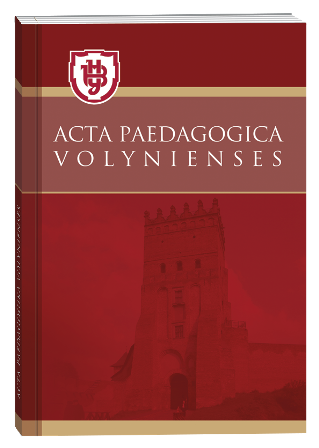FEATURES OF MODERN TEACHING METHODS IN THE PROCESS OF TRAINING OF HIGHER MEDICAL EDUCATION STUDENTS
DOI:
https://doi.org/10.32782/apv/2023.4.16Keywords:
medicine, quality of education, computer technologiesAbstract
High-quality medical education is the key to effective medical care tomorrow. An important issue of current-day is changing the educational approach to a more practical one, which makes it possible to train highly qualified medical specialists. The trend of using a combined format of online education with the traditional form contributes to the development of the competence of education seekers. Important factors that affect the effectiveness of medical training are the level of student motivation, social interaction between the student and the teacher, the availability of the electronic database of educational materials, and the availability of feedback from the teacher. The shortcomings in the field of modern medical education are the lack of clinical skills among medical students, which requires an integrated approach to clinical problems. Modern ways of organizing the educational process, such as problem-based learning (PBL) and case-based learning (CBL) are important for improving the potential of medical education throughout the country. The audience response system (ARS) is characterized by several advantages, such as the ability to conduct an anonymous survey, add questions, leave feedback, improve the attention and activity of acquirers, and save data for reporting and analysis without installing software. The "flipped-classroom" learning model changes the approach to studying lecture material, providing active social interaction between the teacher and students. The utility of research methods in the educational process will contribute to the strengthening of scientific research and the improvement of the research status of higher educational institutions. The use of artificial intelligence (AI) tools in medical education shows a promising perspective. Modern computer technologies allow the use of software applications for the purpose of developing critical thinking in students, including Medscape, MediApp and others. The introduction of modernized interactive tools and informational competence is of great importance in ensuring a high-quality educational process in higher medical institutions.
References
Bączek, M., Zagańczyk-Bączek, M., Szpringer, M., Jaroszyński, A., & Wożakowska-Kapłon, B. (2021). Students' perception of online learning during the COVID-19 pandemic: A survey study of Polish medical students. Medicine, 100(7), e24821.
Dost, S., Hossain, A., Shehab, M., Abdelwahed, A., & Al-Nusair, L. (2020). Perceptions of medical students towards online teaching during the COVID-19 pandemic: a national cross-sectional survey of 2721 UK medical students. BMJ open, 10(11), e042378.
Fujikura, T., Takeshita, T., Homma, H., Adachi, K., Miyake, K., Kudo, M., Takizawa, T., Nagayama, H., & Hirakawa, K. (2013). Team-based learning using an audience response system: a possible new strategy for interactive medical education. Journal of Nippon Medical School = Nippon Ika Daigaku zasshi, 80(1), 63–69.
Lazarus, L., Sookrajh, R., & Satyapal, K. S. (2017). Tablet technology in medical education in South Africa: a mixed methods study. BMJ open, 7(7), e013871.
Ludwig, S., Gruber, C., Ehlers, J. P., & Ramspott, S. (2020). Diversity in Medical Education. GMS journal for medical education, 37(2), Doc27.
Pei, L., & Wu, H. (2019). Does online learning work better than offline learning in undergraduate medical education? A systematic review and meta-analysis. Medical education online, 24(1), 1666538.
Pyörälä, E., Mäenpää, S., Heinonen, L., Folger, D., Masalin, T., & Hervonen, H. (2019). The art of note taking with mobile devices in medical education. BMC medical education, 19(1), 96.
Riddell, J., Jhun, P., Fung, C. C., Comes, J., Sawtelle, S., Tabatabai, R., Joseph, D., Shoenberger, J., Chen, E., Fee, C., & Swadron, S. P. (2017). Does the Flipped Classroom Improve Learning in Graduate Medical Education?. Journal of graduate medical education, 9(4), 491–496.
Sapci, A. H., & Sapci, H. A. (2020). Artificial Intelligence Education and Tools for Medical and Health Informatics Students: Systematic Review. JMIR medical education, 6(1), e19285.
Trullàs, J. C., Blay, C., Sarri, E., & Pujol, R. (2022). Effectiveness of problem-based learning methodology in undergraduate medical education: a scoping review. BMC medical education, 22(1), 104.
Zhao, W., He, L., Deng, W., Zhu, J., Su, A., & Zhang, Y. (2020). The effectiveness of the combined problem-based learning (PBL) and case-based learning (CBL) teaching method in the clinical practical teaching of thyroid disease. BMC medical education, 20(1), 381.
Zinski, A., Blackwell, K. T. C. P. W., Belue, F. M., & Brooks, W. S. (2017). Is lecture dead? A preliminary study of medical students' evaluation of teaching methods in the preclinical curriculum. International journal of medical education, 8, 326–333.







